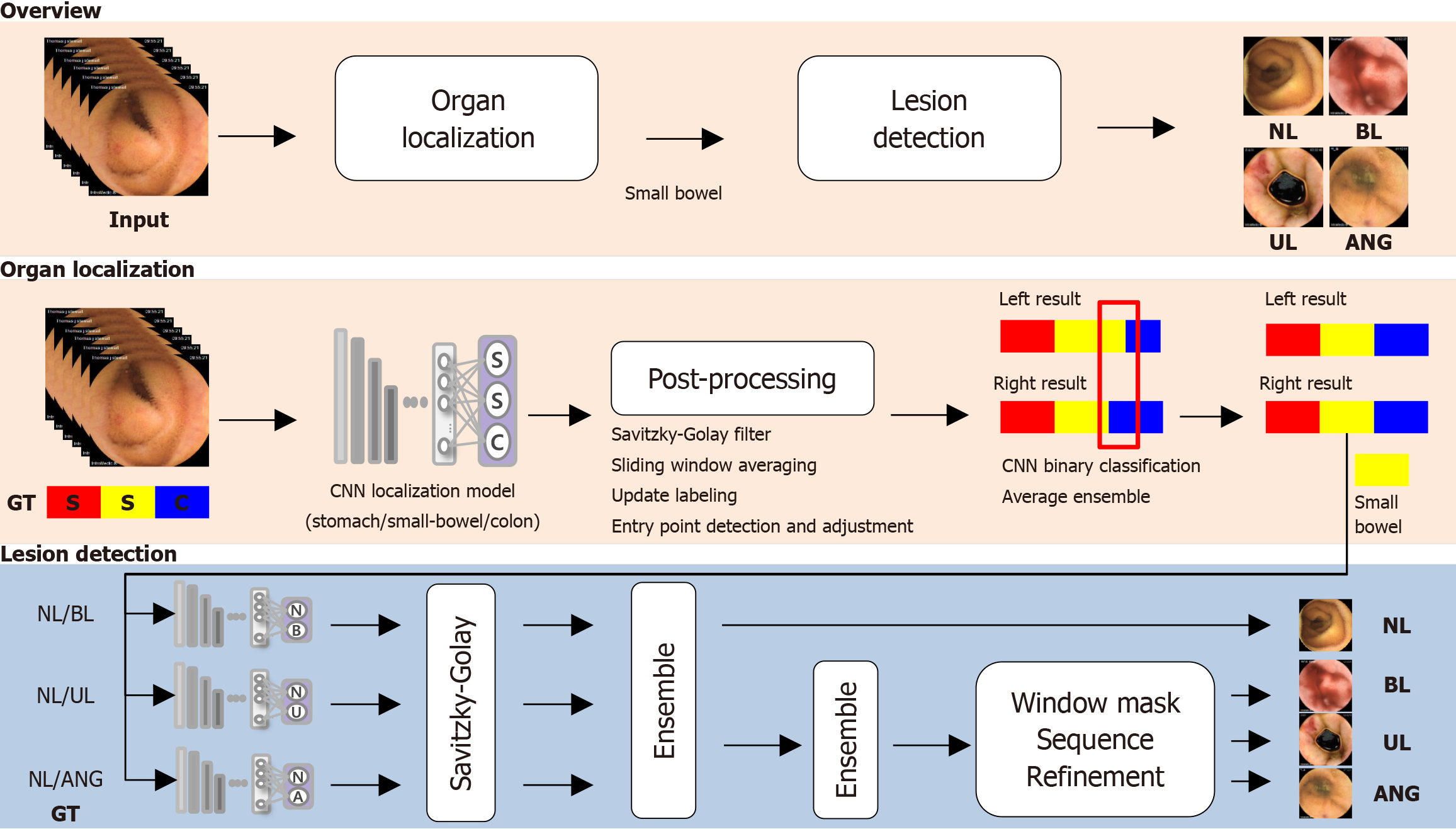Copyright
©The Author(s) 2025.
World J Gastroenterol. Jul 21, 2025; 31(27): 106819
Published online Jul 21, 2025. doi: 10.3748/wjg.v31.i27.106819
Published online Jul 21, 2025. doi: 10.3748/wjg.v31.i27.106819
Figure 1 Overview of artificial intelligence model.
The artificial intelligence system is a two-stage process that first localizes the small bowel in capsule endoscopy videos and then detects lesions such as bleeding, erosion/ulcers, and angiodysplasia. It utilizes convolutional neural network models along with post-processing and ensemble techniques to enhance accuracy and consistency across video frames. NL: Normal mucosa (including debris, bile, and bubbles); BL: Bleeding (active bleeding or visible fresh blood); GT: Ground truth; UL: Erosions/ulcers; CNN: Convolutional neural network; ANG: Angiodysplasia
- Citation: Kwon YS, Park TY, Kim SE, Park Y, Lee JG, Lee SP, Kim KO, Jang HJ, Yang YJ, Cho BJ. Deep learning-based localization and lesion detection in capsule endoscopy for patients with suspected small-bowel bleeding. World J Gastroenterol 2025; 31(27): 106819
- URL: https://www.wjgnet.com/1007-9327/full/v31/i27/106819.htm
- DOI: https://dx.doi.org/10.3748/wjg.v31.i27.106819









